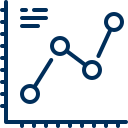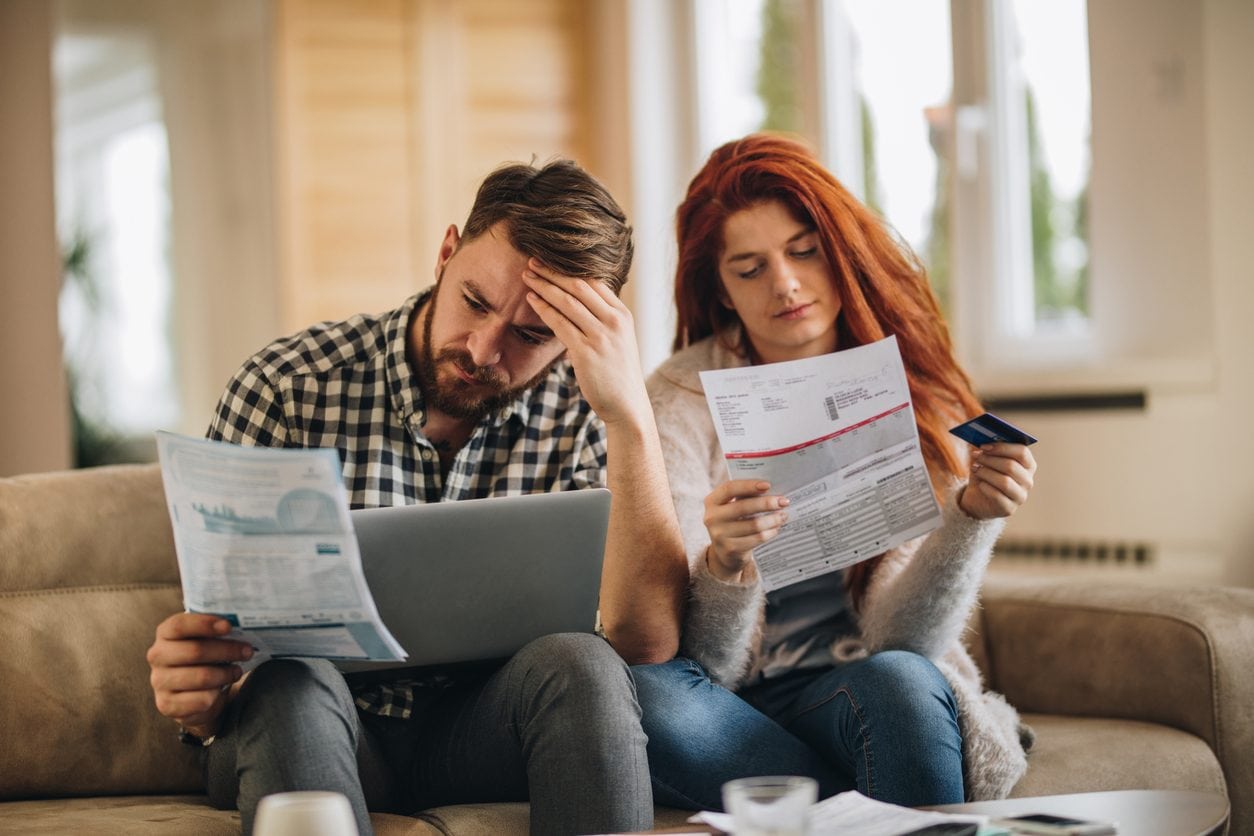- Home
- Who We Are
- Financial Services
Financial Services
- Blog
- Contact Us
Master your wealth with smart debt management – ensuring debt serves your financial growth, not hinders it. Take control of your financial destiny today!
Good debt is debt used in gaining or producing assessable income or investing into assets that create long-term wealth. The interest expenses you incur on these debts can become tax deductible if you use them to generate your assessable income. This is generally associated with borrowing on investment properties, share portfolios or business loans, which in turn produce you cash flow in the form of either rental, dividend or business income.
Bad debt is related to debt that is not serving any purpose. Consumer debt and debt from lending institutions such as credit cards or payday lenders is usually considered bad debt because this type of borrowing simply does not serve a useful purpose.


For many Australians, the family home is the most expensive purchase they will ever make. While it makes sense to get insurance for fire or flood damage, gaining insurance for the loan amount is an afterthought for many of us.
However, if you were to be injured or become seriously sick, you may no longer be able to work. Protecting the assets you have worked so hard to gain with an adequate insurance policy will enable you to cover any excess costs while you focus on recovery.

The first step is to get a clear picture of what you owe. Make a list of all your debts, showing:
◦ How much each debt is
◦ The minimum monthly repayment (if any)
Include credit cards, loan repayments, unpaid bills, fines and any other money you owe. Then add up all the debts to see how much you owe. It may be confronting, but remind yourself that you’re taking charge of your money. And that’s a good thing.

The easiest way to do this is to do a budget. List all the money you have coming in each month (income), such as salary or benefits. Then list all the money going out (debts and expenses), for things like food, rent or mortgage, credit cards, electricity, phone and transport. Tally these up, then compare money in and money out.

Work out which debts are your priority debts and try to pay them first. Priority debts include:
◦ Rent or mortgage payments
◦ Council rates and body corporate fees
◦ Electricity, gas and water
◦ Car repayments — if you need your car for work or essential travel

If you have any extra money at the end of each week, put it into a savings account to build up an emergency fund. This should be enough to cover any unexpected expenses or help you through times when your income changes.
The debt snowball method is a debt-reduction strategy where you pay off your smallest debts first, then roll the money you were spending on those debts into paying off the next smallest debts. By tackling your smallest balances first, you gain momentum as each remaining balance gets smaller and smaller.
Step 1: List your debts from smallest to largest regardless of interest rate.
Step 2: Make minimum payments on all your debts except the smallest.
Step 3: Pay as much as possible on your smallest debt.
Step 4: Repeat until each debt is paid in full.
The debt snowball method works because it’s all about changing your behaviour. You don’t have to hold a math degree or have gone to business school to beat debt. What matters more is that you understand the emotional aspect of debt and how to turn over a new leaf.

If you’re considering consolidating your debt, it’s important to consider your personal financial situation and the type of debt consolidation you’re considering. Consolidating debt with a loan could reduce your monthly payments and provide near-term relief, but a lengthier term could mean paying more in total interest.

A good strategy for paying off debt is to focus on the debt with the highest interest rate first. Make the minimum payment possible for every account besides the one that you are trying to eliminate first.
Then work yourself down the list from highest interest rate to lowest. Once you have paid off the highest interest rate debt, then move your money to pay off the second-highest.

You can significantly reduce your total debt by trading in your car for something cheaper. If you can get $20,000 for a trade-in, and you can find a $10,000 car on the lot, then you just came into $10,000 to help you pay off debt. If you can trade in two cars and concede to just having one, you could double or triple this amount.
Plus, it reduces your annual expenditure. You can further apply this idea to boats, bikes, jet skis or other non-essential modes of transport. Now isn’t the time to have toys. You can have toys when you’re debt-free

Contact your bank and see if you can negotiate a lower interest rate on your mortgage. This is as simple as a phone call and can often result in a reduction in interest rate. Reducing your mortgage interest rate can do two things:
◦ Reduce the amount of interest you pay, which can save you money.
◦ Give you more cash flow to pay off debts with higher interest rates than your mortgage, such as your car loan.

Windfall money is any money you receive that didn’t come directly from your employment. This includes tax returns, bonuses, inheritances, and birthday money. It’s easy to splurge or treat yourself with this money. However, you don’t have spare money to waste if you’re in debt. To improve your financial situation and pay down your debt, try not to blow it on unnecessary items. Instead, use that money for a greater cause, like paying down or off some of your debt.
You will feel better overall once you have reduced the interest you pay, consolidated (some or all) of your loans and start living within your means (i.e., spending less than you earn). Consistency is key when trying to reduce debt as it can be a long process depending on how far in debt you are at this point; however, it will be worth it in the end.

If you have credit card debt, consider transferring it to a 0% balance transfer credit card. Several credit cards provide you with 16-24 months of interest-free on-balance transfers. If you qualify for these cards, this can be a useful strategy for paying less interest and getting ahead on your repayments.
An important step to truly get out of debt is to cancel your original credit card and ensure that you pay off the new 0% balance transfer credit card before its introductory period ends.

It’s important to live within your means. If you have trouble sticking to a budget, use cash. Take out only as much money as you need each week and put the rest of your paycheck toward paying off debt or saving for important goals. Set up automatic payments so that money is paid off your debts and bills as soon as you get paid. This can help remove the temptation to spend what you don’t need.

Bankruptcy is a legal process that can help you to make a fresh start. It releases you from most of your debts and allows you to focus on rebuilding your financial life.
You can apply for voluntary bankruptcy, which is a way of stopping creditors from chasing you for debts. You need to fill in a Bankruptcy Form to do this. If someone owes you money and won’t pay, they might try to make you bankrupt through the courts. This is called sequestration, and it happens if a creditor makes an application to the court.
Bankruptcy typically lasts for three years and one day.
Bankruptcy is a legal process that can help you to make a fresh start. It releases you from most of your debts and allows you to focus on rebuilding your financial life.
You can apply for voluntary bankruptcy, which is a way of stopping creditors from chasing you for debts. You need to fill in a Bankruptcy Form to do this. If someone owes you money and won’t pay, they might try to make you bankrupt through the courts. This is called sequestration, and it happens if a creditor makes an application to the court.
Bankruptcy typically lasts for three years and one day.
A debt management plan will help you keep track of all your debts by giving you one easy way to manage repayment. Debt management plans allow you to consolidate all of your payments into one manageable monthly amount. This can save you time and headache, as well as improve your credit score. It’s important to remember that with all debt management plans, you’ll be repaying your debts over time. This process can take years and, unlike bankruptcy, you can retain great flexibility in managing your financial affairs.

When you reach your preservation age and retire, you can access your super to fund your retirement.
You can also access your super:
You don’t have to cash out your super just because you’ve reached a certain age, however, you need to check if the rules of your particular super fund specify otherwise.
Your preservation age is not the same as your pension age. Your preservation age is the age you must reach before you can access your super and depends on when you were born.
The tax payable on super benefits depends on a number of things, including:
Some super benefits have a tax-free component and a taxable component. The tax-free component generally includes:
ASFA estimates that the lump sum needed at retirement to support a comfortable lifestyle is $640,000 for a couple and $545,000 for a single person. This assumes a partial Age Pension.
ASFA estimates that a modest lifestyle, which covers the basics, is mostly met by the Age Pension. They estimate the lump sum needed to support a modest lifestyle for a single or couple is $70,000.
However, this might not be enough for you, it is important to seek advice on this with a Financial Planner; the team at OakView Financial can sit down with you and work out your required balance to meet your retirement needs.
It’s fair to assume that the average Australian might hope to live comfortably, if not lavishly, in retirement.
The widely reported ASFA Retirement standard suggests couples can enjoy a ‘comfortable lifestyle’ on around $65,000 a year. It stands to reason then that a single person should be able to live more than comfortably on $60,000.
If $60,000 a year sounds like your kind of retirement, the next step is to work out how much super you will need to fund it. That’s where our expert team comes in.
The Association of Super Funds Australia (ASFA) latest report states the average superannuation balance required for a comfortable retirement is $640,000 for a couple and $545,000 for a single person. This assumes you will withdraw your superannuation as a lump sum and receive a part Age Pension.
However, the average superannuation balance of a 60–64-year-old Australian is $359,870 for men and $289,179 for women. This, unfortunately falls short of the required amount needed to live a comfortable retirement.
The good news is that you still have time to change these numbers; time in the market beats timing the market. By working with a Financial Planner, you can employ strategy’s to boost your superannuation so you can hit all your retirement goals and live that well-deserved comfortable retirement.
The transfer balance cap is a $1.7 million transfer balance cap on the amount of money you can shift into a super pension account. Excess amounts will need to remain in a super accumulation account or outside super, where earnings will be taxed. The interaction of the transfer balance cap with other income and investments can be complex, so we advise you to seek professional advice.
The $1.7 million cap applies to individuals, which means a couple could have up to $3.4 million in individual accounts. However, if a couple has one account between them in a single name, the $1.7 million limit applies.
The Department of Social Services reviews the eligibility for the Age Pension each year, increasing the upper limits to scale with inflation. Australian Parliament may also introduce policy changes to the limits, it is best to review your retirement strategy with your Financial Planner each year to ensure you are always taking advantage of the best outcome.
Give one of our friendly team a call today.
We’re here to help. If you’re looking for something specific, send us a message and we’ll get back to you as soon as possible.
Take the first step towards financial peace of mind. Fill in the contact form to receive your free consultation and start your journey towards a secure financial future.
Take the first step towards financial peace of mind. Fill in the contact form to receive your free consultation and start your journey towards a secure financial future.
Disclaimer | FSG | Privacy | Cookies | ABN: 89 629 420 391 | AFSL: 513068
Disclaimer | FSG | Privacy | Cookies |
ABN: 89 629 420 391 | AFSL: 513068